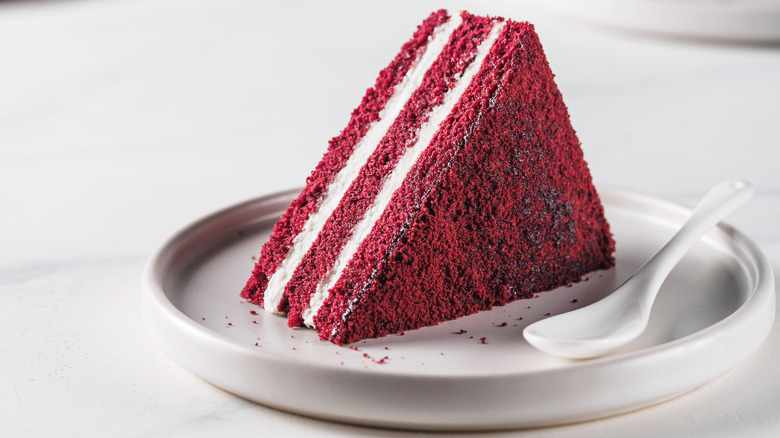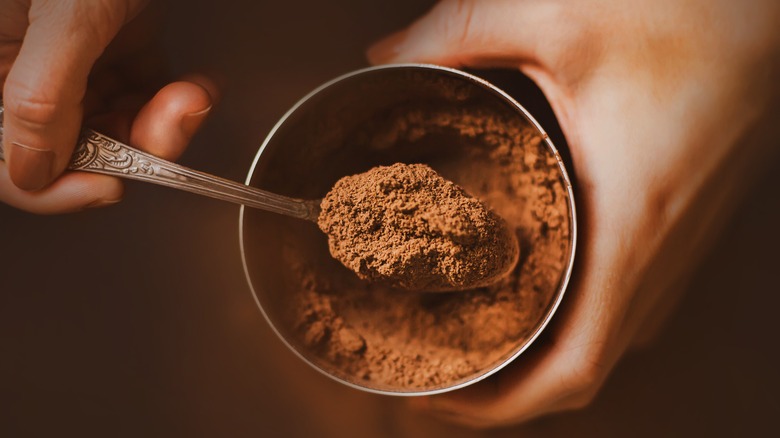The Scientific Reason Red Velvet Cake Is Red
Obviously, red velvet cake is red because of food coloring, right? If you enjoy a red velvet cake these days — or a red velvet cupcake, cookie, cinnamon roll, or any other of this dessert's delightful offspring — it probably will get its color from a dye, but this wasn't always the case. In fact, the original version of red velvet cake is even older than the first food coloring, according to The New York Times. How then did it get its hue? Well, first you have to reconsider what "red" actually is.
The term "velvet cake" goes back to the Victorian Era when it was used to distinguish soft, fluffy cakes from their denser cousins, sponge and pound cakes (via Southern Living). The Waldorf-Astoria hotel in New York City has been credited with serving the first official red velvet cake, but they were most likely only popularizing a dessert already known to some home bakers. The New York Times adds that early versions of red velvet cake were known as mahogany cakes because of their darker shade.
The key is using non-Dutch cocoa
The secret to achieving that original mahogany hue lies in the cocoa used for baking, according to Allrecipes. Cocoa contains an antioxidant called anthocyanin, which also appears in strawberries, plums, red wine, and many other foods on the red-purple color spectrum (via Healthline). Anthocyanin is very sensitive to changes in pH, meaning it reacts strongly to acids and bases alike.
As Allrecipes explains, when the cocoa powder is mixed with naturally-acidic buttermilk, a traditional ingredient in original versions of velvet cake, it turns dark red. Unfortunately, this original recipe is hard to make these days. Most cocoa on the market today is Dutch-processed, which doesn't mean it comes from the Netherlands. It refers to a process that entails an alkalizing agent to the mixture to neutralize the pH.
According to Southern Living and the New York Times, the bright red velvet cake we know today was first made by John Adams, not the president, but a Texas businessman that made food dyes and extracts. Reportedly, Adams sampled the red velvet cake at the Waldorf-Astoria and was a fan. WWII was in full effect at the time and cocoa was scarce. Adams figured there was an untapped market looking for a way to color their cakes. He began selling his food dyes with an accompanying card showing a recipe for a classic velvet cake with a splash of red dye, and the dessert was never the same again.

